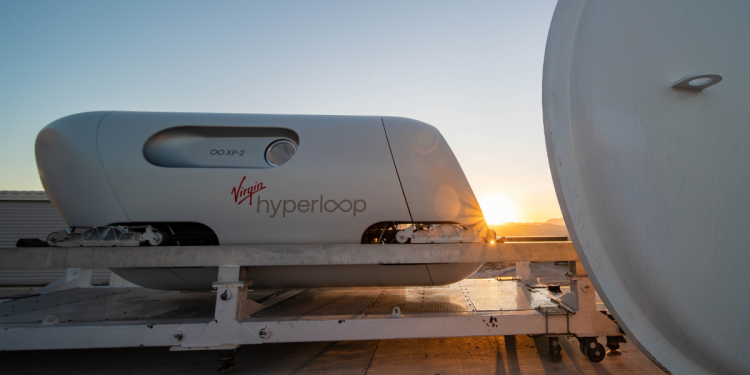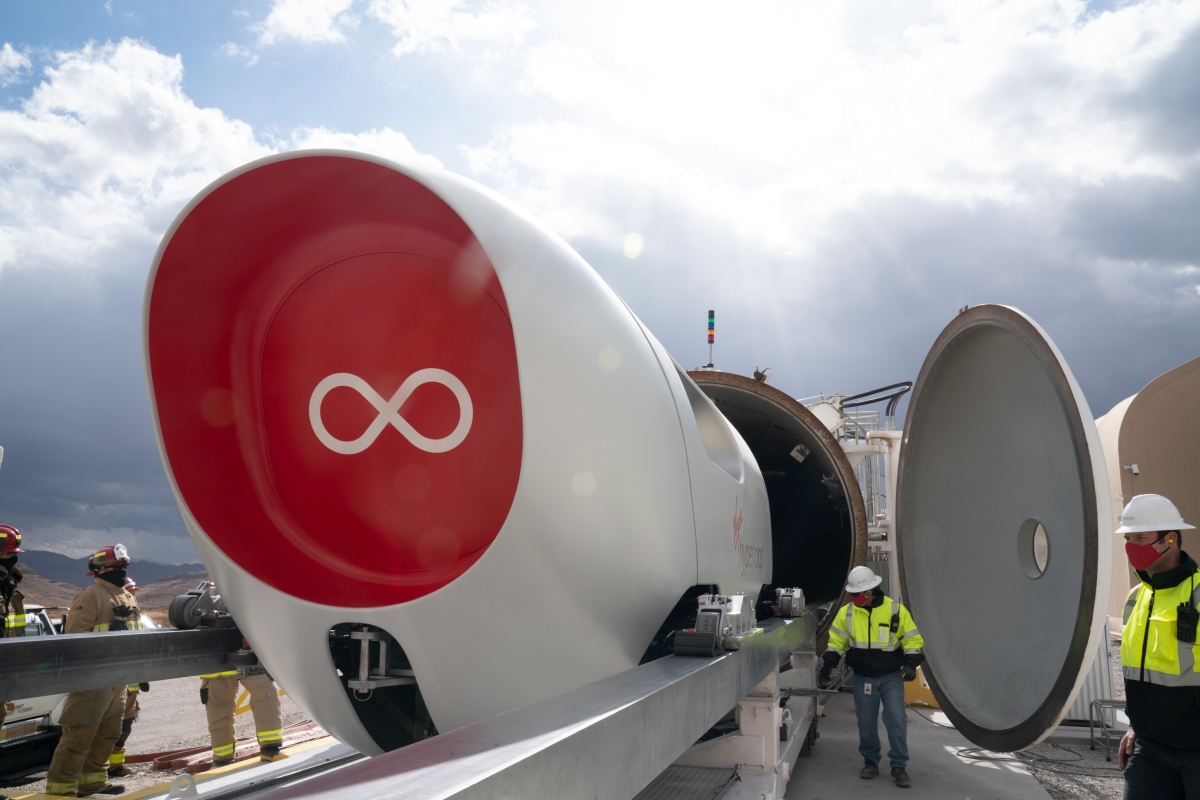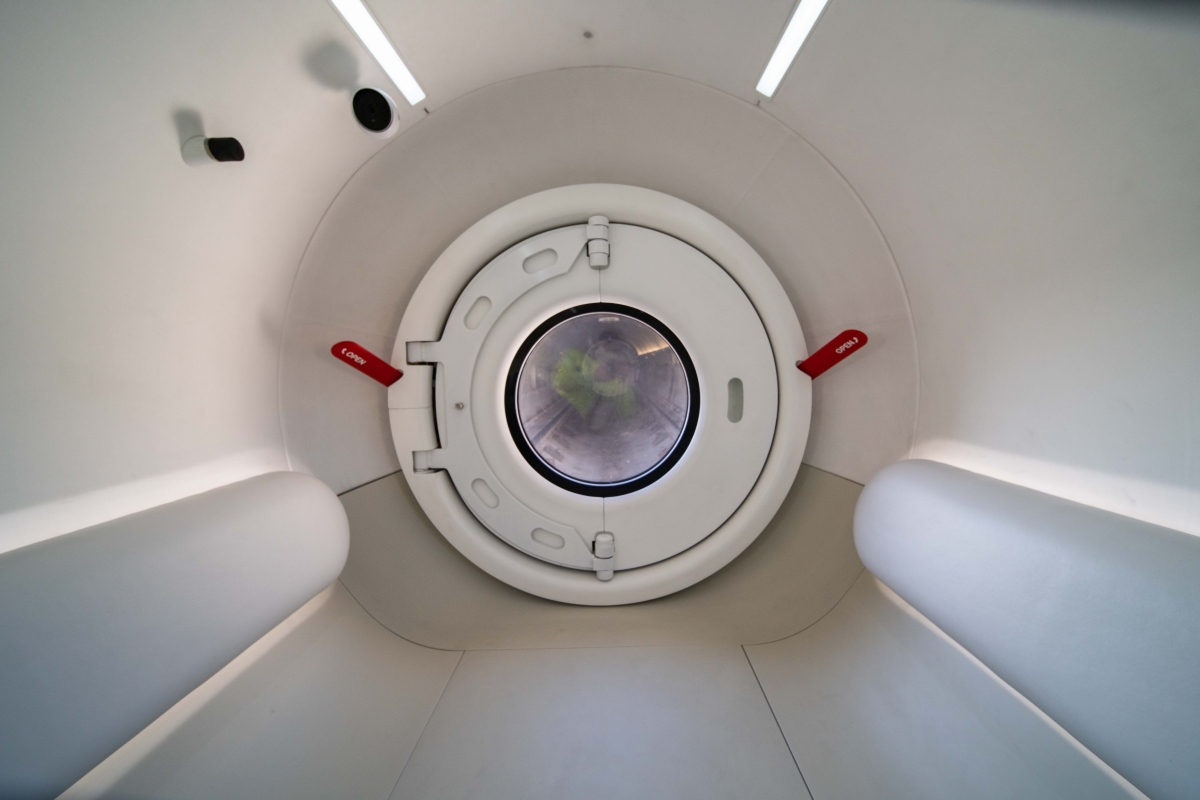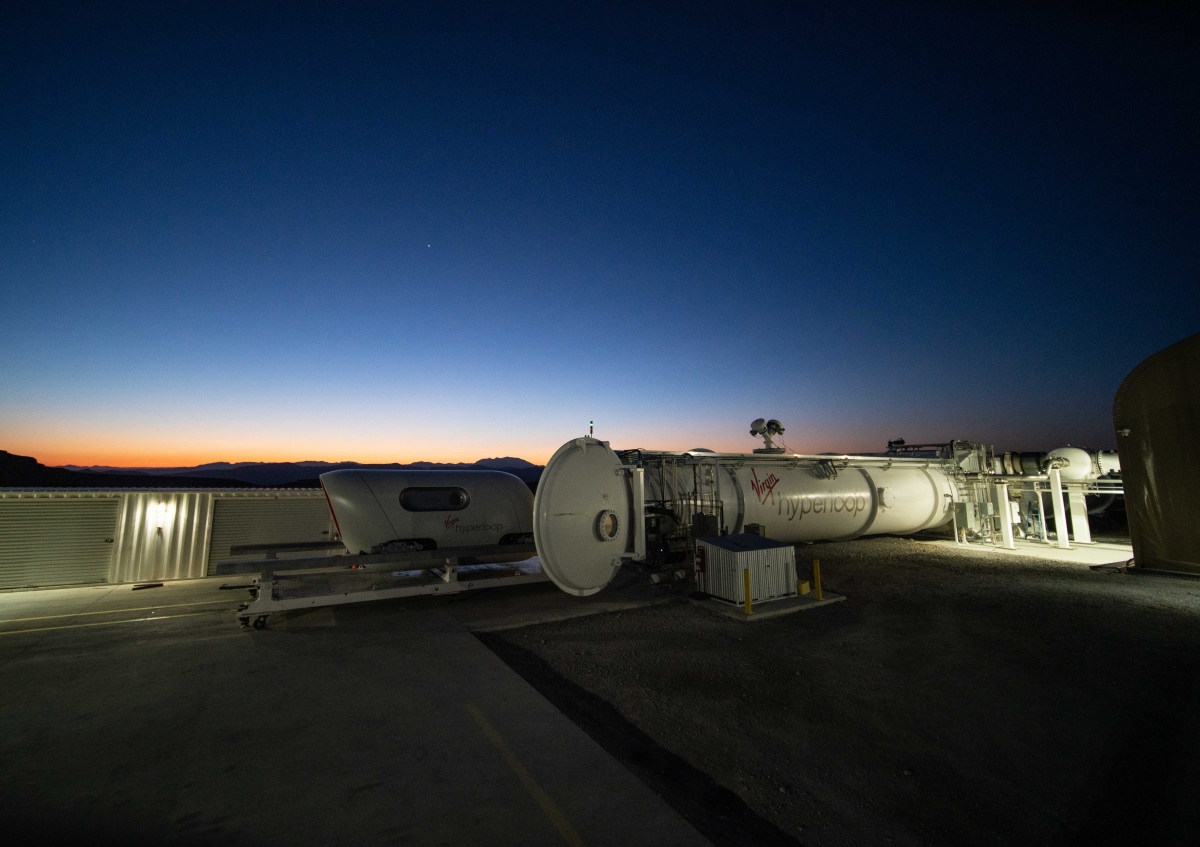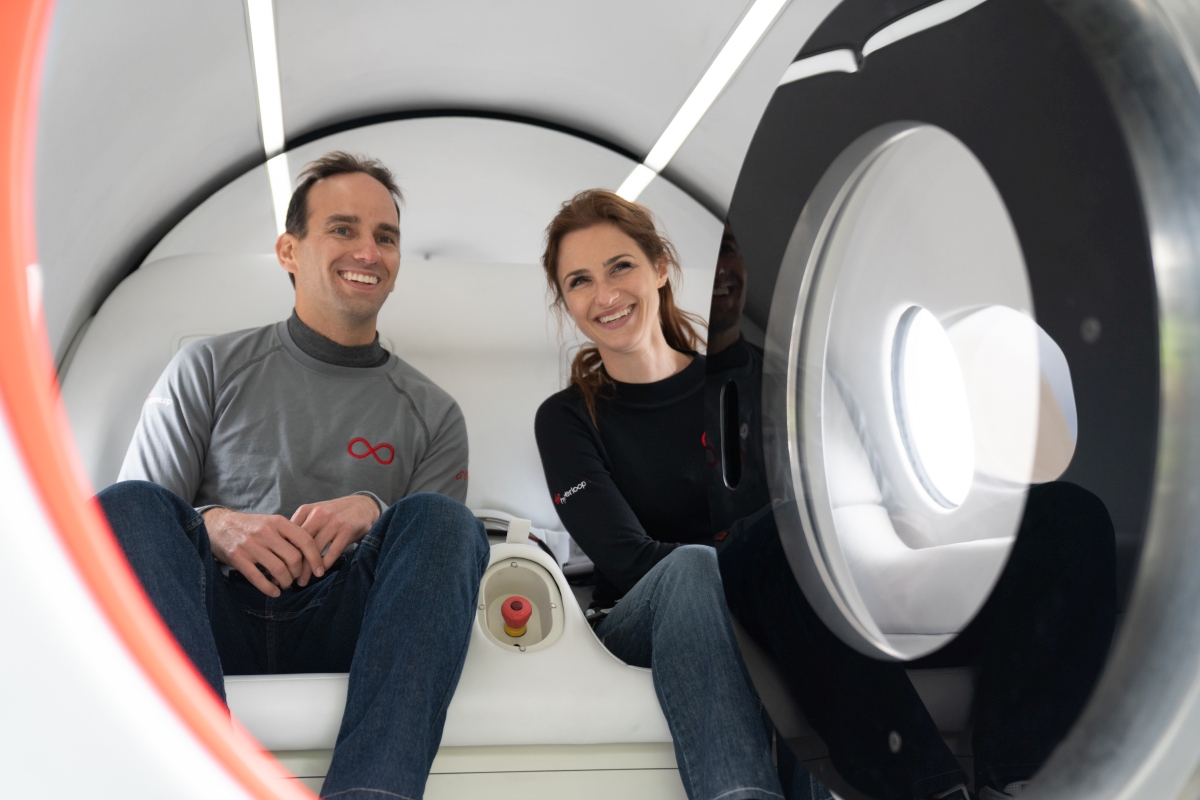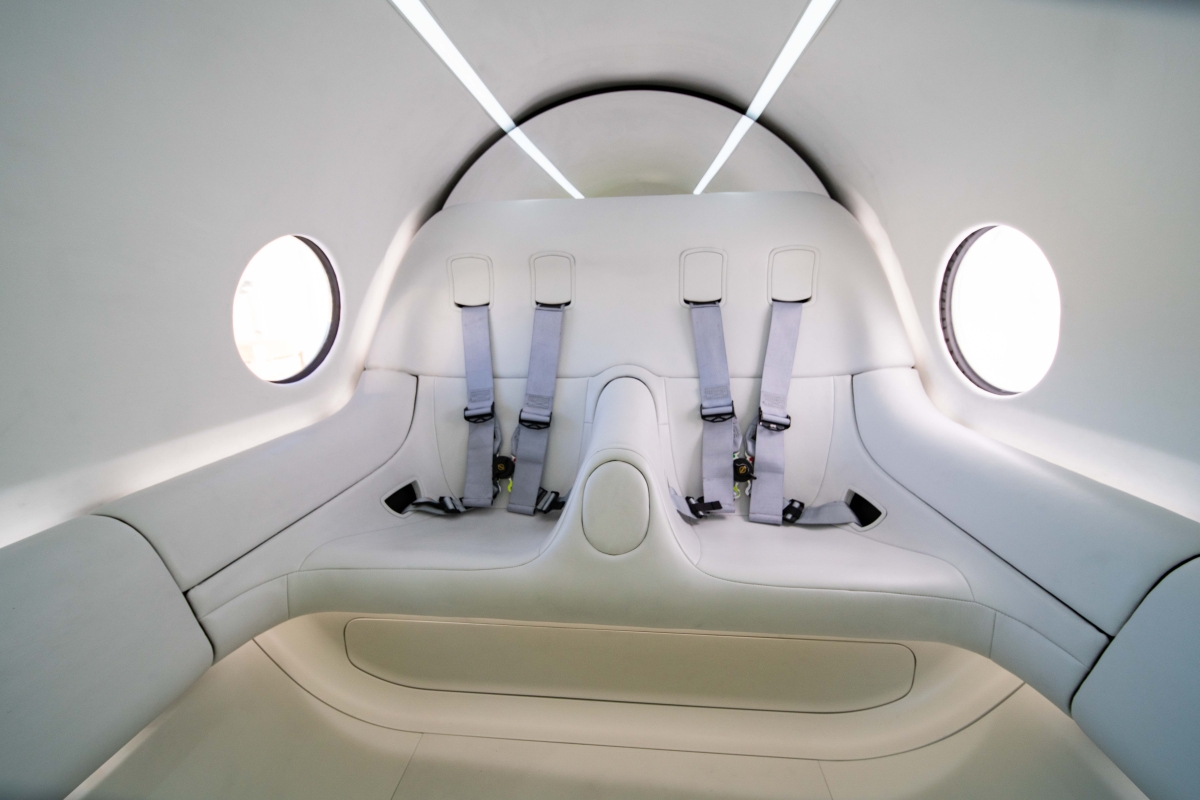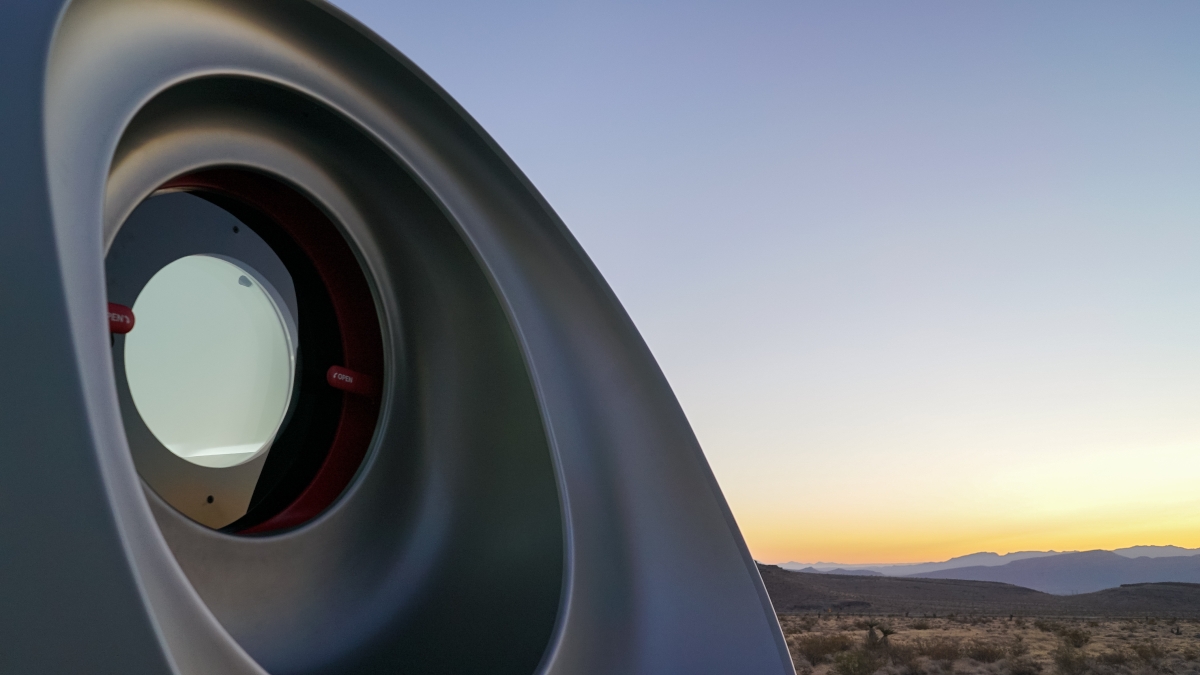A number of years ago, Tesla founder Elon Musk proposed a futuristic new transport concept—the Hyperloop, which would use magnets and fans to slingshot “pods” at high speeds through a vacuum tube. Now, the technology has taken human passengers for the first time ever, with Virgin Hyperloop successfully transporting co-founder Josh Giegel and head of passenger experience Sara Luchian around a 500m test site in Las Vegas.
The test took place on Sunday, 8th November 2020, with Virgin Hyperloop explaining that over 400 trial runs have been conducted on the track prior to this. The first human passengers were sat within a hyperloop pod, the XP-2—custom built for “occupant safety and comfort”—that travelled at over 160km/h for 15 seconds within near-vacuum conditions (on the hyperloop).
It’s worth noting that this isn’t anywhere near the theoretical top speeds that hyperloop systems can offer. Virgin reportedly aims to have these magnetically levitating pods travel at speeds of over 1,000km/h; Sara Luchian explained to the BBC that the overall top speed was limited by the length of the 500m track. Despite that, she described the experience as “exhilarating”, while fellow passenger Josh Giegel said that the test marked a “giant leap” towards the future.
“Hyperloop is about so much more than the technology. It’s about what it enables. To me, the passenger experience ties it all together. And what better way to design the future than to actually experience it first-hand?”
– Sara Luchian, Director of Passenger Experience for Virgin Hyperloop
Regardless, this is a huge milestone for Virgin Hyperloop, and for the hyperloop concept as a whole. Virgin Hyperloop (initially named Hyperloop Technologies) was set up back in 2014, before receiving investment from Virgin Group founder Richard Branson.
“With today’s passenger testing, we have successfully answered this question, demonstrating that not only can Virgin Hyperloop safely put a person in a pod in a vacuum environment, but that the company has a thoughtful approach to safety which has been validated by an independent third party.”
– Jay Walder, CEO of Virgin Hyperloop
Meanwhile, the XP-2 pod weighs in at 2.5 tonnes, and has a recorded top speed of around 386km/h. That was back in 2017, although Virgin predicts a top speed of over nearly three times that. Even for the test, Giegel described the experience as a similar one to an airplane taking off.
A 12-minute hyperloop system between Dubai and Abu Dhabi has been touted, while former CEO Rob Lloyd suggested a link between Gatwick and Heathrow airports—which would complete a 72km journey in just four minutes. There are still some significant challenges for Virgin Hyperloop to overcome, however. For example, the logistics of creating a network of vacuum tubes for the hyperloop system are huge, and the infrastructure necessary would take years—if not more.
Regardless, this might just be the first step towards the future, where public transport might be faster than your average supercar.

